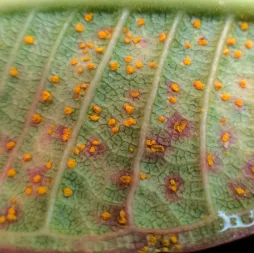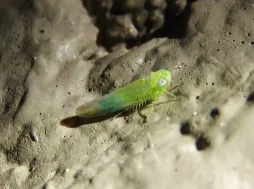Spike lavender, the other scent of lavender
Lavender Aspic (Lavandula latifolia) is widespread in Spain, France and southern England, and belongs to the Lamiaceae family. While its appearance evokes the Mediterranean and Provence, its fragrance is more reminiscent of a Chinese herbalist's back room.
How to recognize spike lavender, Lavandula latifolia?
Spike lavender is a perennial with a dense, compact habit. When in flower, the shrub reaches a height of 80 centimetres and a width of one metre. Its short, woody stems branch to support the flower spikes.
The grey-green evergreen foliage takes on a silvery hue under the effect of heat and drought. The oblong, spatulate leaves are longer (up to ten centimeters) and wider (up to five millimeters) than those of true Lavender. They give off a pronounced camphor scent.
Flowering gives off the same camphor scent. In summer, flowering spikes appear at the end of the stems. The dark purple flowers with their almost blue tones attract bees and pollinating insects.
Lavandula latifolia is non-toxic. It has the same medicinal properties as its cousins. Renowned for its antiseptic and anti-inflammatory properties, it is used in the composition of Tiger Balm. But lavender aspic is shunned by perfumers, who prefer Lavandin or True Lavender essential oils.
Our maintenance tips
Lavender aspic require little maintenance. These plants thrive in periods of drought and adapt to all types of soil. Their only enemy? Too much water. To keep your Lavender aspic alive, take care not to drown its roots.
Watering
Water your Lavender aspic when the soil has dried deeply. Use water at room temperature to avoid damaging the roots. If you can, use rainwater or non-calcareous water.
Never leave water standing in the saucer or planter, as this will rot the roots.
Spray
Your spike Lavender hates wet foliage. You must not mist the plant.
Repotting
Every spring, repot your Lavandula latifolia to give it more space.
Get a pot with holes at least 30 centimetres in diameter. This will give your plant room to grow. Choose a ceramic or terracotta model. These materials help evaporate excess water and prevent root rot.
Pour a layer of clay pebbles or gravel into the bottom for drainage. Then add draining soil, such as potting soil for Mediterranean plants. Place your plant in the center and top with substrate.
Tamp and water for the first time.
Fertilization
To promote the growth of your Lavandula latifolia, apply fertilizer in spring and summer.
Lavender aspic are not very greedy plants. If you want to stimulate their development, apply a fertilizer for Mediterranean plants in early spring.
Lavender aspic are not very greedy plants. If you want to stimulate their development, apply a fertilizer for Mediterranean plants in early spring.
Harvest
Depending on the variety, fruit is harvested between early and late summer.
Pick flower spikes. Make bouquets and hang them upside down in a dry place.
You can then use the dried flowers to perfume your linen.
Prune
Prune faded flower spikes flush with the foliage. This way, the plant doesn't spend energy on producing seeds.
If you have a single plant, use sharp, clean pruning shears. If you have beds or hedges, use shears with clean blades.
Never cut dry wood. The plant will not grow back on old wood.
Carry out maintenance pruning to maintain the shape of your Lavender aspic and help it become denser.
Using shears or pruning shears, cut back the stems by about two-thirds.
Thinning out
When the first shoots appear, keep only the most vigorous from each bucket. Remove the others.
The following spring, you can plant your Lavender aspic in a pot or in the ground.
Plantation
When the risk of frost has passed, it's time to plant.
Soak your Lavender aspic while digging a hole twice the size of the root ball. Place a handful of organic fertilizer at the bottom.
Then install your Lavender aspic. Make sure that the top of the rootball is two to three centimetres below the surface of the soil. Fill the hole with garden soil and tamp to remove air bubbles.
Water for the first time to help the plant take root.
Seedling
Fill cups with potting soil for seedlings. Plant a seed every two centimeters and cover with a thin layer of substrate.
Water for the first time. Water by capillary action, by placing your pots in a larger container filled with water. This way, you're sure to moisten all the soil without the risk of displacing or burying the seeds.
Place your seedlings in a bright spot with a temperature of 20°. You can place them in a mini greenhouse or on a heat mat. Spray the substrate regularly to keep it cool.
Cutting
Cutting is carried out during the strong growth phase, generally in spring and early summer.
For annual pruning, select a terminal shoot about fifteen centimetres long. The stem should still be supple. Remove the leaves from the lower half of the cutting.
In a drilled pot, pour a drainage layer (clay balls or gravel) followed by a rich, draining substrate (horticultural potting soil or potting soil for seedlings and cuttings).
Make a hole with a pencil and plant your graft. Water to aid rooting and eliminate air bubbles.
Diseases / Threats
Information
| Family | Lamiaceae - Lamiaceae |
| Type | Lavender - Lavandula |
| Species | Lavender aspic - Lavandula latifolia |
| Lifecycle | Perennial |
| Foliage | Evergreen |
| Exposure | |
| Substrats | |
| Planting methods |
Open ground In pots In tubs |
| Category | |
| Tags |
Flowery Medicinal Rustic |
| Origin |
Southern Europe |
| Hardiness (USDA) | 8b |
| Leaf color |
|
| Flower color |
|
Discover plants from the same family
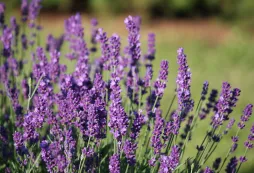
True lavender
Discover
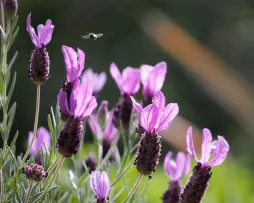
Butterfly lavender
Discover

Lavandin
Discover
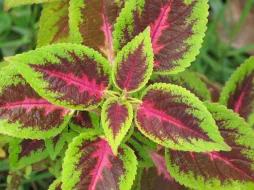
Plectranthus scutellarioides
Discover
















